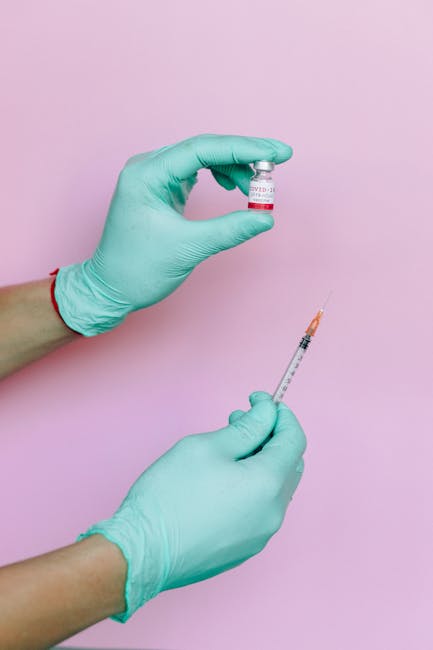Navigating the Labyrinth of Stress: Your Guide to Managing Anxiety Effectively
In today’s fast-paced workplaces and homes, stress and anxiety often co-occur, shaping how we approach responsibilities and wellbeing; this guide frames practical approaches to reduce persistent mental pressure and improve mental health with measurable steps and clear examples. Start by identifying everyday stressors, plan your day with a planning app and block me time for recovery; combine breathing exercises and relaxation exercises into a daily routine to lower stress and interrupt the cycle of worrying. Track improvements with a simple study of baseline stress symptoms and progress, measure hormone release patterns when possible, and consult clinical research for validated interventions. For professional online resources on building resilient digital presence and tools that support outreach materials and stakeholder organizations, explore professional website design and development which can centralize Mental health guides and public health messaging. Implementing cognitive techniques such as Cognitive-Behavioral Therapy principles and deep breathing as a Coping strategy can reduce anxiety spikes and support overall health.
Graphic of daily routine integrating breathing exercises and planning app for stress reduction
Unpacking the Modern Epidemic: A Fact Sheet on Struggling with Stress
Recent prevalence data and public health analyses show elevated stress and anxiety across age groups, prompting governments and stakeholder organizations to invest in outreach materials and support network development to address mental disorders and mental illnesses. Mild-to-moderate symptoms often present as generalized worry, sleep disruption and physical symptoms; these General anxiety symptoms can escalate to panic attack episodes if left untreated. A fact sheet should include clear definitions, statistics on prevalence, evidence-based treatment pathways such as Cognitive behavioural therapy and talking therapies, and referral routes including mental health services and government funding where available. Practical items include printable PDF resources, lists of Peer support community contacts, and indicators of when to seek clinical treatment for extended periods of emotional pressure or loss of control. Use specific case studies showing reduced stress with Healthy lifestyle changes like exercise, Healthy diet, and social network activation.
Infographic showing statistical trends and resources for mental illnesses and public health outreach materials
Essential Anxiety Strategies: What This Guide Will Uncover to Reduce Stress
This section identifies Anxiety strategies rooted in evidence: Cognitive-Behavioral Therapy techniques to identify negative thought patterns, mindfulness meditation for momentary relief, and practical Coping mechanisms such as Worry time scheduling and graded exposure to Anxiety triggers. We outline a Coping strategy combining physical activity and relaxation technique; for example, short exercise sessions followed by guided deep breathing reduce fight-or-flight response intensity and lower stress hormone release. The guide will present structured steps to manage stress and anxiety, including daily routine adjustments, plan your day templates, and small measurable goals and challenges for behavioral activation. It will highlight the role of a supportive support network and Peer support in recovery and suggest online courses to build skills in Cognitive behavioural therapy, breathing exercises, and relaxation exercises. Realistic expectations, tracking Mild-to-moderate symptoms and when to escalate to treatment are included.

Diagram showing combined CBT steps, mindfulness meditation, and exercise for stress reduction
Beyond the Surface: Why Addressing Stress and Anxiety Matters for Mental Wellbeing
Addressing stress and anxiety is essential to protect mental wellbeing, preserve physical health, and reduce long-term burden on public health systems; untreated emotional challenges can lead to chronic mental disorders and affect overall health and workplace productivity. Concrete examples illustrate that employees who practice self-compassion and maintain a Healthy lifestyle report lower stress symptoms and better emotional strength when faced with bigger challenges. Programs that combine peer support, targeted Cognitive-Behavioral Therapy, and exercise reduce relapse and improve daily functioning. This paragraph emphasizes measurable outcomes: reduced cortisol markers, fewer sick days, and improved adherence to treatment and responsibilities. It also explains the human response mechanism, including fight-or-flight response and fight-or-flight response terminology, and practical approaches to manage stress using mindfulness meditation and social network activation to foster resilience.

Visual flowchart linking workplace interventions to reduced cortisol and improved mental wellbeing
Understanding the Roots of Worry: The Background on Anxiety and its Causes
Understanding the roots of worry involves exploring biological, psychological, and social contributors to anxiety and stress; genetics, early experiences, and current responsibilities interact to produce mental pressure and emotional responses. Clinical research shows that negative thought patterns and maladaptive coping mechanisms sustain General anxiety symptoms and contribute to the Cycle of anxiety, which increases worrying and may produce physical symptoms like increased heart rate, sweating, or panic attack events in susceptible individuals. Effective assessment includes screening for Anxiety condition severity, noting triggers, and evaluating impact on everyday life, social network, and work or study functioning. Tailored interventions combine Cognitive-Behavioral Therapy, lifestyle changes (exercise, Healthy diet), and structured support such as Peer support community or talking therapies when appropriate. Practical case studies demonstrate how small changes—plan your day, balanced me time, and breathing exercises—reduce extended periods of distress and restore emotional strength and resilience.
Timeline showing interaction of genetics, life events, and stressors leading to anxiety symptoms
The Current Landscape: How Many Are Stressed Out and Seeking Anxiety Management
Population surveys reveal substantial numbers reporting elevated stress and anxiety; prevalence estimates vary by region but consistently indicate a large share seeking mental health assistance for emotional pressure and mental disorders. Data-driven outreach integrates Mental health guides, public health campaigns, and stakeholder organizations to improve access to treatment and reduce barriers related to stigma and government funding complexity. Analyses of treatment patterns show increased uptake of online courses, teletherapy, and peer support, which can complement traditional Cognitive behavioural therapy for mild-to-moderate symptoms. Case studies from workplace wellness programs demonstrate measurable decreases in stress symptoms following interventions that combine exercise, mindfulness meditation, and practical stress management tools. Reporting should include prevalence, treatment availability, clinical research highlights, and recommendations for improving reach to underserved groups experiencing loss of control and worrying that impairs overall health and daily routine.
Map charting regional prevalence and uptake of online courses and talking therapies in mental health
Mastering Your Mind: Revolutionary Stress Busters and Anxiety Management Techniques
Innovative stress management blends behavioral science, technology, and supportive therapies to create personalized interventions that reduce stress and manage anxiety with durable outcomes. Techniques include app-based planning tools to balance work and play, wearable-guided relaxation exercises to prompt deep breathing in high-stress moments, and blended care models combining Cognitive-Behavioral Therapy sessions with peer support and coaching to maintain gains. Evidence shows integrating cognitive restructuring to counter negative thought patterns with physical activity and structured me time improves mental wellbeing and lowers stress symptoms in randomized trials. Practical implementation emphasizes measurable goals and challenges, periodic review of progress, and escalation pathways for Anxiety condition presenting with severe Panic attack risk or extended periods of distress. This section guides clinicians and individuals to assemble a toolkit of Coping methods and stress management practices for everyday stress.
Composite image of app-based tools, therapy sessions, and exercise routines targeting stress and anxiety
Demystifying Anxiety: Unraveling the Core of Panic and Stress
Demystifying anxiety requires deconstructing the emotional, cognitive, and physiological elements that create panic and sustained stress; understanding the fight-or-flight biological response and how it interacts with cognitive biases clarifies why anxiety feels like loss of control. Practical frameworks explain how worrying can become habitual, emphasizing Cognitive-Behavioral Therapy to label and modify negative thought patterns and redirect attention to actionable Coping mechanisms such as scheduled Worry time or breathing exercises. Clinicians use measures of Physical symptoms, stress symptoms, and functional impairment to tailor intervention intensity, and peer support or group therapies offer Emotional support when talking therapies alone fall short. Incorporating mindfulness meditation and relaxation technique into daily routine improves tolerance of uncomfortable feelings and builds emotional strength gradually. Case studies show that combining exercise, Healthy diet, and professional treatment reduces the frequency and intensity of panic episodes.

Diagram showing fight-or-flight pathways and cognitive distortions that fuel panic and anxiety
Understanding Your Triggers: A Stress Diary for Anxiety Disorder
A structured stress diary is a practical tool to map Anxiety triggers, situational patterns, and physiological markers that precede stress and anxiety episodes; record timing, context, responsibilities involved, intensity, and subsequent coping responses to identify trends. Over weeks, diary data reveal recurring triggers such as workload peaks, relationship conflicts, or sleep disruption, enabling targeted interventions like adjusting daily routine, scheduling me time, or using Worry time as a bounded strategy. Incorporate objective measures like heart rate or subjective ratings of mental pressure and emotional pressure to quantify progress. Use diary insights to inform Cognitive behavioural therapy plans, propose behavioral experiments, and prioritize goals and challenges for graded exposure. Sharing anonymized diary summaries with a support network or clinician improves accountability and refines treatment.
Example stress diary template showing timestamps, triggers, intensity, coping methods, and outcomes in daily life
The Power of Mindfulness Meditation for Calming Anxiety
Mindfulness meditation provides a direct pathway to reduce anxiety by strengthening present-moment awareness and breaking the habit of repetitive worrying; even short sessions can retrain attention, reduce negative thought patterns, and lower stress-related hormone release. Structured practice—starting with five minutes of guided breathing exercises and progressively increasing duration—improves tolerance of uncomfortable sensations and reduces reactivity to Anxiety triggers. Combine mindfulness with Cognitive-Behavioral Therapy principles for greater effect, and complement with relaxation exercises and a Healthy lifestyle including exercise to maximize gains. Clinical studies demonstrate reductions in General anxiety symptoms and improvements in mental wellbeing when mindfulness is practiced consistently alongside other supports like Peer support and talking therapies. Practical guidance includes scheduling practice into daily routine, using audio guidance, and tracking improvements in stress symptoms over weeks.

Photo of practitioner leading a short mindfulness meditation session in a quiet studio environment
The Current Landscape: How Many Are Stressed Out and Seeking Anxiety Management
Regular physical activity is a proven intervention to reduce stress and alleviate anxiety symptoms through multiple pathways: improved sleep, endorphin release, reduced stress hormonals, and enhanced cognitive control that counters negative thought patterns. Tailor exercise to individual capacity—short high-intensity intervals, brisk walking, or yoga—and integrate into the daily routine to ensure consistency and avoid barriers like time pressures and responsibilities. Case studies show measurable reductions in General anxiety symptoms and improvements in overall health, physical health, and emotional strength after 8–12 weeks of moderate exercise combined with Cognitive behavioural therapy. Encourage goal setting with achievable targets and use a planning app for accountability. Pair exercise with healthy diet and peer support for sustained adherence, and monitor for signs of overtraining or increased stress symptoms.

Group exercising outdoors with varied activities demonstrating inclusive routines for mental wellbeing improvements
Mastering Your Mind: Revolutionary Stress Busters and Anxiety Management Techniques
An in-depth analysis examines how prolonged stress and anxiety symptoms alter cognition, behavior, and physiology, increasing vulnerability to mental disorders and impairing functioning in work, study, and relationships. Chronic stress can dysregulate hormone release, producing fatigue, disrupted sleep, and heightened emotional reactivity; Cognitive-Behavioral Therapy targets the cognitive distortions that perpetuate those patterns, while relaxation technique and exercise help recalibrate the nervous system. Quantitative approaches include measuring stress symptoms, incidence of panic attack, and General anxiety symptoms pre- and post-intervention to document efficacy. Include examples from clinical research showing effect sizes for interventions such as mindfulness meditation and CBT, and describe referral thresholds for talking therapies versus specialist care. Practical sections highlight strategies to manage stress in everyday life, improving coping mechanisms and emotional strength through structured plans.

Research chart comparing physiological markers pre and post intervention for anxiety and stress management
Understanding the Roots of Worry: The Background on Anxiety and its Causes
Identifying unhelpful thoughts and patterns of thinking is central to reducing anxiety and stress; clinicians use thought records to capture negative automatic thoughts, challenge cognitive distortions, and develop alternative, balanced appraisals that support a positive outlook. Techniques include Socratic questioning, behavioral experiments, and graded exposure to test beliefs about loss of control and worst-case scenarios. Integrate Cognitive-Behavioral Therapy exercises with mindfulness meditation to reduce rumination and Worry time to contain perseverative thinking. Practical examples show a patient replacing catastrophic predictions with evidence-based alternatives, resulting in lower stress symptoms and fewer avoidance behaviors. Use a support network to practice new responses in social settings and track progress with printable PDF worksheets and outcome measures.
Example thought record worksheet filled with cognitive restructuring steps and alternative balanced thoughts
The Current Landscape: How Many Are Stressed Out and Seeking Anxiety Management
Developing positive thinking habits requires deliberate practice: schedule short daily reflections, document three small wins, and use affirmation-based behavioral activation to counter defeatist narratives that fuel anxiety. Pair these cognitive practices with physical activity and adequate sleep to support neurochemical balance and reduce stress symptoms. Implementing a Coping strategy that combines daily gratitude journaling, short mindfulness meditation, and targeted Cognitive behavioural therapy homework demonstrates improved resilience in workplace trials. Encourage Self-compassion when setbacks occur and use Peer support for reinforcement; measurable indicators include reduced frequency of worrying, fewer anxiety triggers, and improved task performance. Provide a template for weekly review to set realistic goals and challenges and adjust the plan based on progress.
Visual of a daily reflection notebook with prompts for gratitude, goals and challenges, and stress tracking
Mastering Your Mind: Revolutionary Stress Busters and Anxiety Management Techniques
Actionable steps center on creating a structured toolbox: begin with psychoeducation on stress symptoms and Anxiety triggers, schedule Worry time to limit rumination, adopt breathing exercises for acute relief, and plan regular exercise for baseline resilience. Introduce a plan your day template that balances responsibilities with me time to prevent burnout and lower stress in everyday life. For mild-to-moderate symptoms, self-help interventions like mindfulness meditation, online courses in CBT techniques, and peer support groups are effective first-line options. Provide concrete steps for escalation: when Panic attack frequency increases, when loss of control occurs, or when physical symptoms impair function, seek professional talking therapies or specialist assessment. Use checklists, printable PDF guides, and measurable goals to track progress and maintain a positive outlook.
Step-by-step checklist showing self-help tasks, escalation points and monitoring tools for anxiety management
Your Step-by-Step Guide: Coping with Stress and Preventing a Panic Attack
This guide offers stepwise protocols for imminent panic: recognize early stress symptoms, slow breathing with structured breathing exercises, ground using five-senses techniques, and remove immediate stressors to regain control. Train with simulated exposures and practice deep breathing daily so that in high-anxiety moments the body defaults to calmer responses rather than fight-or-flight response escalation. Cognitive strategies to challenge catastrophic predictions reduce the intensity of anxiety and lower the likelihood of full Panic attack progression. Include relapse prevention by identifying triggers, building a support network, and scheduling follow-up sessions with therapists. Example case studies show individuals reducing panic frequency by 60% after implementing daily relaxation technique and structured coping mechanisms. Provide printable PDFs summarizing steps and emergency contact protocols for rapid reference.

Illustrated emergency coping card with breathing steps and grounding cues for panic prevention
Navigating Common Challenges in Your Journey to Manage Anxiety
Common challenges include fluctuating motivation, setbacks during exposure exercises, and comorbid physical health issues that complicate progress; anticipate these by building redundancy into plans, such as alternate exercise options, flexible scheduling, and steps for re-engagement after relapse. Emotional challenges like shame and worrying about judgment can be reduced through Peer support and talking therapies that normalize experience and offer Emotional support. Use data from self-monitoring and clinical measures to identify plateaus and adjust intensity of interventions. For workplace or study-related stress, collaborate with managers or educators to balance responsibilities and apply reasonable adjustments. Practical strategies include micro-goals, reward systems, and crisis plans for high-risk moments.

Flowchart showing common setbacks, mitigation strategies, and re-engagement steps for anxiety management
Urgent Advice: What to Do During a Panic Attack for Quick Relief
Urgent advice emphasizes immediate, evidence-based actions: slow exhalation-focused breathing, grounding techniques, and cognitive labeling of the experience ("this is anxiety, not danger") to reduce catastrophic escalation. Use a simple 4-4-8 breathing pattern or alternative deep breathing protocols practiced in low-anxiety moments for reliability under stress. If possible, move to a quieter space, remove stimulants, and arrange for brief social support; having a peer or support network member available via phone reduces isolation and fosters quick emotional stabilization. When Panic attack frequency or severity increases despite these measures, seek professional treatment options, including emergency evaluation if risk to safety exists. Train with role-play and printable PDF instructions to make responses automatic.

Emergency action graphic showing breathing pattern steps, grounding cues, and contact protocols
Going Further: Advanced Techniques for Long-Term Stress Management
Advanced stress management integrates pharmacological, psychotherapeutic, and lifestyle components tailored by clinical research to individual profiles; combine Cognitive-Behavioral Therapy with adjuncts like graded exercise, targeted relaxation training, and when indicated, medication under specialist supervision for treatment-resistant cases. Implement relapse prevention plans, monitor stress symptoms longitudinally, and leverage planning app analytics to detect early signs of deterioration. Emerging approaches include biofeedback, digital CBT modules, and peer-led maintenance groups that sustain gains after acute therapy ends. Address underlying social determinants such as financial or housing stress with stakeholder organizations and public health programs to reduce chronic stress exposure. Case studies reveal long-term reductions in stress and anxiety symptoms when multidisciplinary care addresses mental disorders, physical health, and social support simultaneously.

Multi-modal treatment diagram showing therapy, medication, exercise, and social interventions over time
Expert Tips: Optimizing Lifestyle Habits for Reduced Stress
Expert tips focus on sustainable lifestyle adjustments: prioritize consistent sleep, maintain a Healthy diet, incorporate daily physical activity, and set boundaries to balance work and play. Use a planning app to allocate time for me time and to plan your day with realistic goals and challenges that prevent overwhelm and lower stress. Limit stimulants and maintain social network connections for emotional support; Peer support groups and family involvement often improve adherence. Track outcomes with simple metrics—sleep quality, mood ratings, and stress symptoms—to refine habits. Practical examples include micro-exercise breaks during study or work and scheduled relaxation technique sessions to preempt stress escalation.

Lifestyle collage showing sleep hygiene, healthy meals, and micro-exercise to reduce stress
Game-Changing Optimization Strategies: From Self-Talk to Professional Support
Optimization strategies range from refining self-talk patterns to integrating professional Support through talking therapies, coaching, or clinical referral; modify internal dialogue to emphasize self-compassion and evidence-based reframing to counter persistent negativity. For complex or persistent Anxiety condition, coordinate Cognitive behavioural therapy with pharmacotherapy, guided by clinical research and specialist evaluation. Leverage technology—automated reminders for breathing exercises, app-based CBT modules, and teletherapy platforms—for scalable support. Ensure Peer support community involvement and organizational policies that reduce workplace stressors. Real-world examples show significant reductions in stress symptoms when individual-level cognitive work is paired with systemic supports like reasonable adjustments and access to mental health guides.
Illustration of layered supports including self-talk techniques, peer support, and professional therapy pathways
Demystifying Anxiety: Unraveling the Core of Panic and Stress
Examining real-world impact, case studies highlight multifaceted programs combining workplace policy changes, accessible talking therapies, and community Peer support that reduced reported stress and anxiety by measurable margins over 12 months. One initiative that integrated online courses with supervised group CBT and regular exercise saw participants report lower stress symptoms and improved overall health and physical health outcomes. Future directions include better-targeted public health funding, integration of mental health guides into primary care, and enhanced stakeholder organizations collaborating on outreach materials to raise awareness and reduce stigma. Clinical research continues to refine treatment combinations and identify predictors of response, enabling personalized care pathways that balance efficacy with accessibility.

Case study timeline showing baseline metrics, interventions, and 12-month outcome improvements in stress and anxiety
Understanding Your Triggers: A Stress Diary for Anxiety Disorder
Inspiring stories humanize recovery: individuals who combined structured Cognitive-Behavioral Therapy, Peer support, regular exercise, and daily mindfulness meditation often report sustained reductions in anxiety symptoms and regained confidence to tackle bigger challenges. Personal narratives detail how scheduling Worry time and me time, leveraging social network support, and practicing breathing exercises during acute episodes prevented escalation into Panic attack and enabled return to work or study. These stories provide templates for others, showing realistic timelines, setbacks, and strategies that worked—such as graded exposure to anxiety triggers and consistent use of relaxation technique. Sharing such accounts within Peer support communities and outreach materials reduces stigma and encourages help-seeking.

Photo collage of diverse individuals sharing anonymized success stories and recovery milestones
The Power of Mindfulness Meditation for Calming Anxiety
Valuable lessons include early intervention importance, combining therapy with lifestyle changes, and the effectiveness of peer-led initiatives in sustaining recovery; programs that prioritize access to talking therapies and online courses demonstrate higher engagement and better long-term outcomes. Other lessons emphasize measurement—tracking stress symptoms and Physical symptoms to tailor intensity—and building community resources to address social determinants that exacerbate mental illnesses. Government funding and stakeholder organization collaboration enable scalable outreach materials and public health integration. Clinicians report better adherence when interventions are practical, time-efficient, and include family or workplace stakeholders to reduce everyday stress. These insights guide future program design and policy.

Visual summary of lessons learned with icons for early intervention, measurement, and community support
Discovering New Stress Busters: The Role of Mindfulness Meditation in Recovery
New stress busters emphasize combining mindfulness meditation with behavioral activation to rebuild resilience; evidence supports integrating short, frequent mindfulness sessions with physical activity and cognitive restructuring to address negative thought patterns. Trials show improved mental wellbeing and lower stress when mindfulness is combined with group support and guided Cognitive-Behavioral Therapy. Practical implementation includes accessible audio guides, brief classroom sessions, and pairing meditation with morning routines to increase adherence. This combined approach reduces everyday stress, mitigates anxiety symptoms, and enhances emotional strength, particularly when accompanied by supportive Peer support communities and talking therapies as needed. Emphasize measurable outcomes such as reduced stress symptoms and improved functioning in study or work settings.
Meditation workshop snapshot showing participants practicing guided mindfulness and journaling for recovery
Anticipating Tomorrow: Emerging Developments in Anxiety Management Research
Emerging research areas include digital therapeutics, precision psychiatry, and novel behavioral interventions that target the neural circuitries underpinning anxiety; studies are exploring personalized CBT modules, biofeedback integration, and scalable peer-led programs to expand reach. Research into hormone release patterns and biomarkers may improve early detection of stress susceptibility and enable preventive interventions. Trials combining exercise regimens, mindfulness meditation, and technology-assisted Cognitive behavioural therapy show promise for longer-lasting benefits. Stakeholder organizations and public health agencies are piloting outreach materials and online courses to increase access, while clinical research refines treatment algorithms for varied presentations from mild-to-moderate symptoms to severe Anxiety condition. Prioritize dissemination of effective programs and government funding to scale proven models.
Lab scene showing researchers testing digital CBT modules and biofeedback for anxiety management research
Forward-Looking Predictions: The Future of Healthy Lifestyle and Stress Reduction
Predictions suggest a shift toward integrated care models where Healthy lifestyle prescriptions—exercise, Healthy diet, sleep hygiene—are embedded in standard mental health treatment plans and reimbursed through public health mechanisms. Wearable tech will prompt real-time breathing exercises and relaxation exercises during stress peaks, while planning apps help individuals balance responsibilities and lower stress proactively by recommending schedule adjustments. Peer support and community-based programs will remain central, complemented by online courses and mental health guides that democratically deliver evidence-based interventions. Policy shifts and government funding could subsidize access, reducing prevalence of untreated mental disorders and improving overall health outcomes.

Futuristic montage of wearables, apps, and community programs coordinating for stress reduction and healthy lifestyles
New Frontiers: How Regular Exercise is Reshaping Mental Wellbeing Strategies
Regular exercise is reshaping strategies by being prescribed as part of formal treatment protocols and packaged with psychological interventions; clinicians now recommend specific regimens tailored to anxiety symptom profiles and physical health, reflecting robust evidence for benefits on mood and stress resilience. Integration involves setting clear, attainable exercise goals, monitoring adherence, and combining movement with cognitive skills training to maximize gains. Program evaluations document improvements in stress symptoms, reduced worrying, and enhanced emotional strength when exercise is paired with Cognitive-Behavioral Therapy. Community exercise initiatives and workplace wellness programs create supportive contexts that increase participation and lower barriers to access. Encourage pairing with Healthy diet and sleep hygiene to amplify effects on mental wellbeing.

Community fitness program showing diverse participants engaging in accessible exercise routines for mental wellbeing
Embracing Regular Exercise: A Cornerstone of Mental Wellbeing
Sustaining mental wellbeing requires a long-term plan that balances proactive maintenance with responsive care: continue practicing coping mechanisms learned in treatment, schedule periodic booster sessions of therapy, and maintain routines like mindfulness meditation, regular exercise, and balanced nutrition to prevent relapse. Build a robust support network including friends, family, and Peer support, and use technology—planning app and reminders—to plan your day and balance work and play. Reassess goals and challenges regularly, celebrate small wins, and adapt strategies when facing bigger challenges or changes in life circumstances. When symptoms escalate, use escalation pathways to access talking therapies or specialist care. Track outcomes systematically to maintain progress and resilience.
Person walking an uplifting path with markers for milestones, therapy sessions, and community support checkpoints
In-Depth Analysis: The Psychological Effects of Stress and Anxiety Symptoms
This recap synthesizes key strategies: identify triggers with a stress diary, apply Cognitive behavioral techniques to reframe negative thoughts, practice mindfulness meditation and breathing exercises to reduce acute anxiety, and incorporate regular exercise and a Healthy diet to bolster baseline resilience. Use scheduled Worry time and daily routine adjustments to manage worrying and responsibilities, deploy Peer support and talking therapies for Emotional support, and escalate to specialist treatment when Panic attack risk or severe Anxiety condition emerges. Emphasize measurement, printable PDF resources, and community-based programs to ensure sustainable implementation and reduced prevalence of untreated mental illnesses.
Summary infographic listing core anxiety strategies and practical implementation steps for daily life
Empowering Yourself: Final Thoughts on How to Manage Stress and Anxiety Effectively
Empowerment involves knowledge, practice, and the right supports: educate yourself with Mental health guides, engage in skill-building online courses, create a support network for accountability, and adopt daily practices like mindfulness meditation and relaxation technique to handle everyday stress proactively. Cultivate Self-compassion when progress is slow and celebrate incremental improvements; a positive outlook combined with concrete Coping mechanisms reduces the burden of anxiety symptoms and improves overall health. Prioritize accessible resources and seek talking therapies or Cognitive behavioural therapy when self-help is insufficient; coordinated care often yields the best outcomes. Maintain balance between work and play, use planning tools to plan your day, and scale interventions based on severity and functional impact.

Empowering montage of resources, community support, and self-care practices for lasting stress reduction
Take Control: Your Call to Action for Proactive Anxiety Self-Help and Mental Wellbeing
Take control by initiating a simple, structured plan today: complete a stress diary, schedule short daily mindfulness meditation sessions, commit to regular physical activity, and set aside Worry time to contain rumination. Identify a support network and enroll in an online course or local Peer support community to learn evidence-based coping mechanisms like Cognitive-Behavioral Therapy techniques and breathing exercises. Track stress symptoms and adjust goals and challenges gradually; use practical tools such as planning apps and printable PDF guides to lower stress and prevent relapse. For organizational leaders, implement policies that reduce workplace stressors and provide access to talking therapies and mental health guides. Small, consistent steps produce durable change when combined with emotional support and professional resources.

Call-to-action visual showing checklist, support contacts, and app reminders to begin a proactive anxiety plan
Actionable Steps: How to Manage Stress and Implement Anxiety Self-Help
Next steps include seeking tailored assessments for persistent symptoms, joining community programs, and exploring specialist options for complex cases; integrate findings from self-monitoring into therapy sessions and use outcome data to refine treatment. Advocate for improved access to mental health services through stakeholder organizations and review government funding opportunities that support scalable interventions like online courses and Peer support initiatives. Strengthen social network connections and create workplace or academic adjustments to reduce everyday stress exposure. Continue practicing evidence-based stress management strategies—mindfulness meditation, exercise, and Cognitive behavioural therapy principles—and schedule periodic reviews to adapt the plan for evolving life demands.

Roadmap graphic showing next steps from assessment to community programs and specialized care options
Essential Support: NHS Help, Online Courses, and Additional Resources for Teens and Adults
Accessing essential support begins with understanding available services: primary care referrals, NHS Help pathways, community mental health teams, and accredited online courses that teach Cognitive behavioural therapy skills and relaxation exercises. For teens and adults, peer support groups, school counseling, and workplace mental health initiatives provide complementary resources; refer to Mental health guides and stakeholder organizations for local directories and government funding opportunities. Practical tips include preparing a summary of stress symptoms and Anxiety symptoms for appointments, asking about Mild-to-moderate symptoms treatment options, and requesting printable PDF self-help materials. Combine professional treatment with lifestyle adjustments—exercise, Healthy diet, and regular sleep—to maximize benefits and improve overall health. For community resources and event listings that support mental wellbeing and outreach, consult independent platforms that organize local streams, events, and coverage like sports event streaming and coverage which often partner with Peer support initiatives in community settings.

Resource board showing NHS contacts, online course logos, and local support group listings for teens and adults













